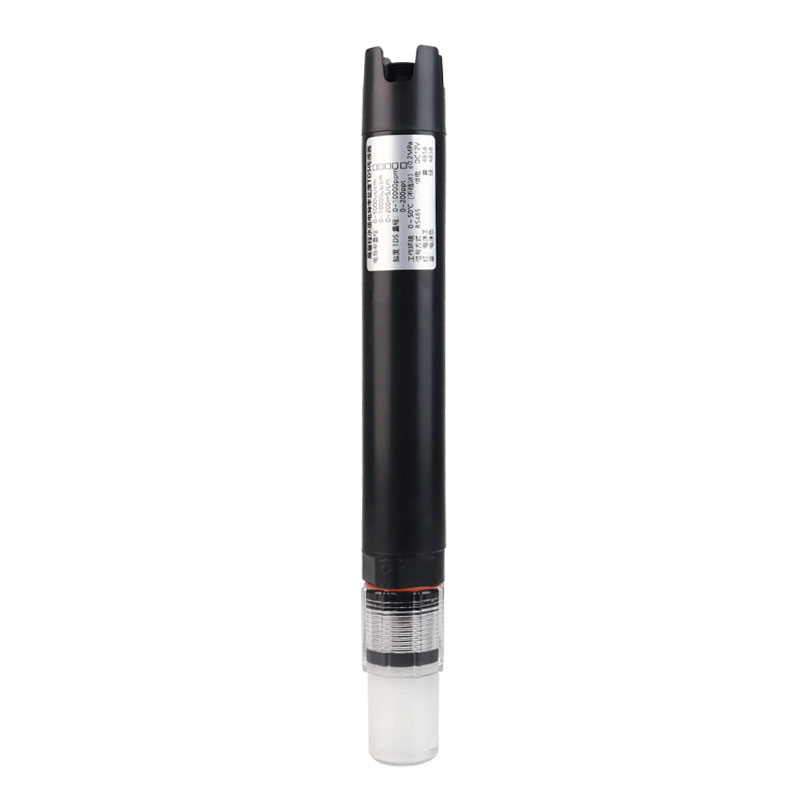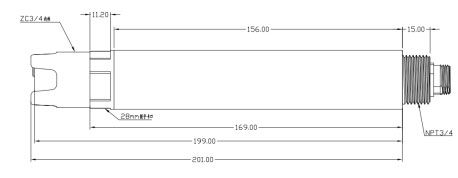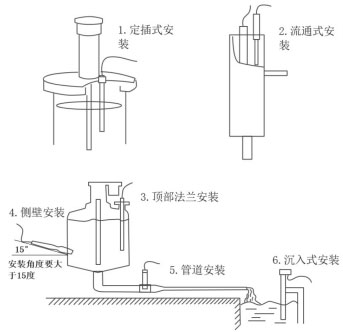Tianyi Sensor IOT Technology Co., Ltd
Sales Manager:Ms. Emily Wang
Cel,Whatsapp,Wechat:+86 15898932201
Email:info@fengtutec.com
Add:No. 155 Optoelectronic Industry Accelerator, Gaoxin District, Weifang, Shandong, China

Sales Manager:Ms. Emily Wang
Cel,Whatsapp,Wechat:+86 15898932201
Email:info@fengtutec.com
Add:No. 155 Optoelectronic Industry Accelerator, Gaoxin District, Weifang, Shandong, China

Model:FT-S7H
Brand:tianyi
1.Salinity sensor application environment description
Salinity sensor is used to measure the salinity of liquids and solutions, and monitor conductivity and TDS values at the same time. It is suitable for aquaculture and other fields.It is used for environmental water quality detection and various high/low ionic strength water sample testing, which can meet the requirements of most industrial/environmental applications for online conductivity, salinity, and TDS measurement.
Signal output: RS485 (MODBUS-RTU).
Internal signal isolation technology has strong interference.
Good reproducibility, thermal stability, low drift, small size, fast response speed
Easy to install, simple, 3/4NPT pipe threads, easy to sink-in installation or install in pipes and tanks
Stable performance and long service life
IP68 waterproof standard
24*1.218*1.5*228*22
2.Salinity sensor technical performance and specifications
1.Technical parameters
| Measurement principle | Contact method of electrode |
| Signal mode | RS485 (MODBUS-RTU) |
| Conductivity measurement range | (0~5000μS/cm)(0~10000μS/cm)(0-30mS/cm) |
| Electrical conductivity resolution | 1μS/cm0.01mS/cm |
| Salinity measurement range | 0-10000ppm0-30ppt |
| Salinity resolution | 1ppm0.01ppt |
| TDS measurement range | 0-10000ppm0-30ppt |
| TDS resolution | 1ppm0.01ppt |
| Measurement accuracy | ±1.5%; ±0.1°C |
| Response time | About 30 seconds (98% still liquid) |
| Case material | ABS |
| Temperature compensation | Automatic temperature compensation (M1820Z) |
| Cable length | Standard 5 meters |
| Supply voltage | 12-24VDC (0.4W@12V) |
| Measuring the environment | Temperature 0~50℃ (no freezing), <0.2MPa |
| Waterproof grade | IP68 |
| Installation method | Immersed installation, NPT3/4 thread |
2.Salinity sensor size diagram

3.Salinity sensor installation and electrical connection
1.Salinity sensor installation

Note: The sensor cannot be installed inverted or horizontally when installed, and should be installed at least 15 degrees above the angle of inclination.
2.Electrical installation
The cable is a 4-core shielded wire:
Red—Power cable blue/black—Ground cable green—485B yellow—485A
Different production batches, the cable colors vary slightly.Please refer to cable silkscreen for details.
Four.Salinity sensor maintenance and maintenance
1.Use and maintain
Conventional electrodes require periodic cleaning and calibration, and the maintenance cycle is determined by the customer according to their working conditions.Conventional electrode cleaning methods:
The four key aspects of agriculture, namely soil moisture condition, crop seedling condition, pest and disease condition, and disaster condition, are crucial elements in the agricultural production process. The soil moisture condition reflects the water status of the soil, and an appropriate soil mo...
Water quality monitoring is a systematic scientific process designed to assess water conditions, warn of pollution risks, and provide data support for water environment management through real-time monitoring and analysis of various substances in water bodies.Modern water quality monitoring often em...
The Wind Sensor employs the time-of-flight measurement principle, accurately calculating wind speed and direction by detecting changes in the speed of ultrasonic waves propagating in the air....
The traditional triangle odor bag method mainly relies on the subjective judgment of professional odor assessors, which is not only cumbersome and costly to operate, but also difficult to achieve real-time monitoring and traceability. The emergence of the Odor Online Monitor has overcome these short...